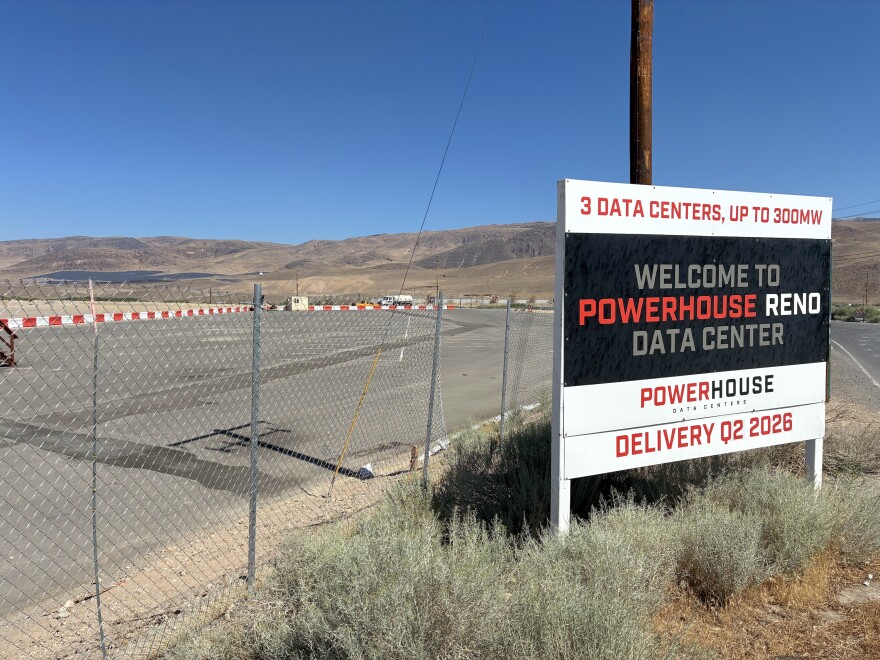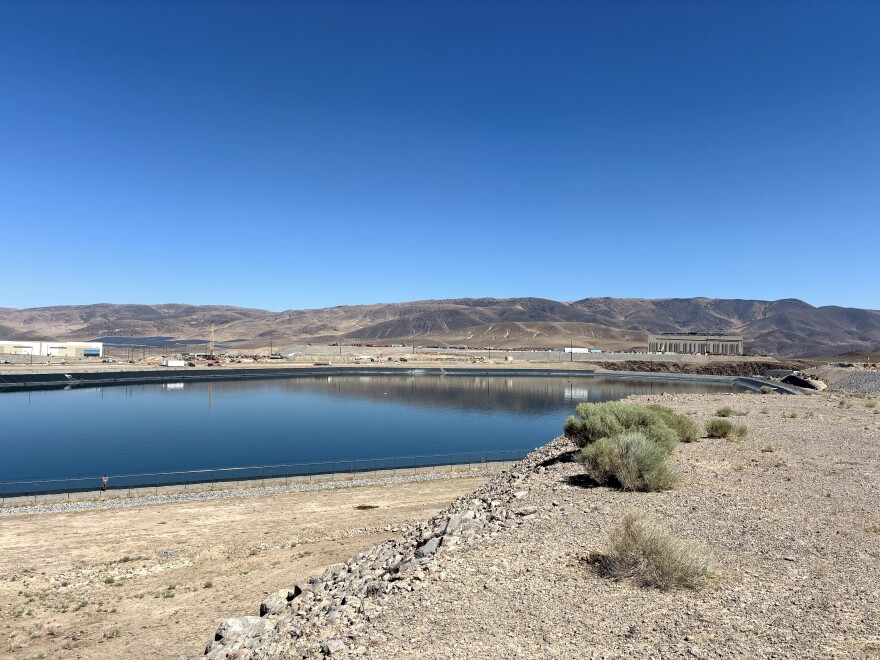“Directions to 255 USA Parkway,” Brian Armon asked his phone’s AI assistant, which responded with a virtual map and a traffic report.
Armon, a commercial real estate broker, was driving to the Tahoe Reno Industrial Center, which rises from the sagebrush like a pop-up book. Flat-roof buildings stretch out against the backdrop of brown hills. Cranes and excavators stand still like toys.
“So, the building you see up on the hill there, that’s Vantage Data Centers,” Armon said and then pointed to several half-built structures in the distance. “EdgeCore, that’s a data center that’s under construction.”
Here, global tech giants are racing to turn desert land into the backbone of the internet.

“This is Google’s data center over here, kind of the nondescript concrete building,” Armon said as he drove on. Later, he nodded toward a large plot of land dotted with grazing wild horses. “This piece right here was recently acquired by Microsoft, it’s about 226 acres.”
In this expansive business park, just east of Reno, Nev., sits what some say is the largest support system on Earth for artificial intelligence. It’s a data center hub that will be approximately 1.5 times larger than the city next door. It sits in the nation’s driest state, but it will require a significant amount of water.
Armon said this region checks the big boxes for data centers: plenty of land, few natural disasters, and enticing tax breaks.
“We’ve had a massive amount of data centers that have shown up, and more that are looking,” Armon said.
Not just in northern Nevada, but across the Mountain West, where many states are betting on data centers to power their economies.

Like Nevada, Colorado, Wyoming, and Arizona have also created policies that allow the states to offer significant tax incentives for data centers.
However, the momentum of data centers in the arid West is sparking public outrage at meetings, from Las Cruces, New Mexico, to Tucson, Arizona. And earlier this year, the Sierra Club challenged the first approved project within Reno city limits.
The concern: water. Data center servers generate a lot of heat, and many use huge amounts of water for cooling. Companies typically use water in two ways: air cooling or water cooling. Air cooling works like an oversized A/C unit; water cooling works like a giant refrigerator.
In a statement to the Mountain West News Bureau, Google said its data centers near Reno use air cooling. Microsoft, Switch, Nova, and Vantage Data Centers didn’t respond to inquiries.
Stanford hydrologist Newsha Ajami said no matter the method, they’re like thirsty crops – but permanent.
“You have to continuously water them, right?” Ajami said. “So, it doesn't provide that flexibility that's needed, especially during dry or drought periods.”

A 2024 federal report found that U.S. data centers used 17 billion gallons of water per year, which is enough to supply 150,000 homes. That’s still only a fraction of what American farmers use, but data centers' water demands are projected to double or even quadruple within the next few years.
This comes as climate change threatens water supplies with rising temperatures, less snow, and deeper droughts, said Sean McKenna, a scientist at the Reno-based Desert Research Institute.
“And that's not good, because snow is like our water tower, right?” McKenna said. “That's how we store that moisture for later in the year.”
Today, about 75% of the Mountain West is in drought, according to the U.S. Drought Monitor.
In Nevada, state data shows that over half of the groundwater basins are over-allocated. That means more water is promised on paper than exists underground.
The Tahoe Reno Industrial Center’s water district holds rights to more than 4 billion gallons a year, mostly groundwater and treated wastewater, said general manager Shari Whalen.

Every new project built at the business park must consider water use, Whalen said.
“Our plan is not to bring water in from anywhere else,” she continued. “Our plan is to fully and responsibly utilize the resources we have.”
The district says it doesn’t use city drinking water. But, when needed, it can draw up to 325 million gallons a year from the Truckee River, the region’s main water source. The river spills from Lake Tahoe, through Reno, across the desert, and into Pyramid Lake, home of the Pyramid Lake Paiute Tribe, which has about 1,300 members living on the reservation.
“Every drop that's pulled out of the river is exactly that – that's a drop that doesn't make it to Pyramid Lake,” said Tribal Chairman Steven Wadsworth, standing near the lake’s shores on a sun-splashed morning. “This is why we get up every morning – Pyramid Lake. Our traditional name, Cui-ui Tucutta, which means fish eater. That's who we are as a people.”
That’s why in recent years the Pyramid Lake Paiute Tribe fought the business park’s plans to pump more groundwater from the basin. In 2019, Nevada regulators sided with the tribe, another chapter in their fight to protect their lake.

Nevada already has about 60 data centers, with a dozen more planned over the next decade. And some of those thirsty facilities could tap into the river that feeds Pyramid Lake.
“Everybody's only focused on what's going to happen this year, and the next two, three years,” Wadsworth said. “And that's just not far enough to think.”
ABOUT OUR WIRED, WIRED WEST PROJECT
Data centers are booming across the Mountain West as big tech moves to solve its AI storage problem. Nondescript, square, warehouse-type buildings are popping up in neighborhoods, open plains, and rolling foothills. The burgeoning industry leaves many communities grappling with the prospects of increased air pollution, dwindling water supplies, and higher utility bills. All this even as climate models predict more heat, drought and other weather extremes across the Mountain West.
Read the entire series here.
The Mountain West News Bureau is a collaboration between public media stations in Arizona, Colorado, Idaho, Nevada, New Mexico, Utah and Wyoming along with NPR.



